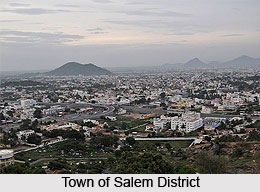 The vast continent of India houses a number of towns and places that have developed her over the years. Amongst several places one distinguishes the significance of Kolathur. There are people who also identify Kolathur as Kulathur, It is a residential locale, which is situated in the district of Salem of Tamil Nadu state of India. Kolathur lies between two states namely Tamil Nadu and Karnataka (M.M.Hills, Kollegal, Mysore). Kolathur is situated approximately 11 kilometres away from Mettur Dam . It is located at a distance which is about 65 km north-west of Salem
The vast continent of India houses a number of towns and places that have developed her over the years. Amongst several places one distinguishes the significance of Kolathur. There are people who also identify Kolathur as Kulathur, It is a residential locale, which is situated in the district of Salem of Tamil Nadu state of India. Kolathur lies between two states namely Tamil Nadu and Karnataka (M.M.Hills, Kollegal, Mysore). Kolathur is situated approximately 11 kilometres away from Mettur Dam . It is located at a distance which is about 65 km north-west of Salem
In order to discover a place in the true sense first it becomes imperative for a person to catch hold of its demographical scenario. Towards achieving such motive, numerous demographers have been appointed for organizing surveys and research works in Kolathur for a prolonged period of time. Their hard work bore fruit since they have succeeded in preparing some authentic reports that are related to Kolathur`s demography. One such significant report is the Census report of a specific year. Being brought out in the year 2001, this report throws some light on certain aspects like population status , literacy condition etc. Thus according to this report, the total population of Kolathur has been enumerated to be 10,319. Out of it, male populace constitutes 53 %, while the population of females is 47 % only. In Kolathur, 9 % of the total population is below six years of age.
Literacy rate of Kolathur acts as vital indicator for discovering to what extent growth has occurred here. As has been mentioned in the aforesaid report, the average literacy rate of Kolathur constitutes 62 %, which is higher than 59.5 %, the average literacy rate of India. This affirms that Kolathur is a developed place. If one delves deep into the report one can even decipher the status of both male and female literacy rates. Male literacy rate of Kolathur constitutes 70 % which proves that males are much more oriented to education and learning. The female literacy rate is 53 % only.
Few more information is collected about Kolathur. It has got 14 villages with 168 habitations in them. These are as follows:
1. Chithirapattypudur village : Habitations include Chithirapattypudur, Boomanur , Karunkaradu, Keelmolaparaiyur , Koasakarattur , Komaravelkottai , Mettuthanampatty , Melmolaparaiyur , Poraimedu , Ramayammal Nagar , Salavaikkalpudur . Saveriyarpalayam , Sengalmedu , Siluvaipalayam.
2. Alamarathupatty : The name of habitations are Elupannaikadu , Elaraimathikadu , Gandhi Nagar , Kamaraj Nagar , Keeraikadu , Kumbarapatty , Kurumbanoor , Niluvaikalpudur,
3. Kannamoochi : Kandukarankottai , Chettiyur , Kannamoochi , Kannamoochipudur , Kalavandiyur , Kosavankaradu , Milakpothi , Moolakadai , Nanjundapuram , Neduncheliyan Nagar , Pitankaneri , Pitaranur , S S Kattuvalvu , Uppukalur , Porasumarathu kadu ,
4. Karungalur village : Erathukaranurcheri , Gandhi Nagar , Goundanur , Eruthukaranur , Kalayanur , Karungallur ADSt , Karungallur , Komalikadu , Mettu Kaveri Puram , Mettupalayur , Palavadi , Pethancheri , Puduvelamangalam , Vedikaranur , Sembarampudur , Tharkadu , Tharkadu AD Street , Thelunganur , Veeranur are the habitations of the village.
5. Kaveripuram : Chettipatty , Alaiyapuram , Govindapadi , Kanuvaikadu , Karaikadu , Kathiripatty , Kaveripuram , Korapallam , Kilakku Kottaiyur , Kottaiyur , Kullaveeran patty , Malaiyalathar Kottai , Mamarathur , Panamarathur Colony , Neethankadu , Pudunagar , Sathiya Nagar , Unjakorai , Vinayagapuram , Vellalapatty ,
6. Kolnaickanpatty village : Vatchampalli ,Kattur , Kolnaickanpatty , Manakadu , Ottankadu , Poraiyar , Pullavaliarikadu , Reddiyur , Therkarthikadu , Sanavoor .
7. Lakkampatty village : Chinna thanda , Anna Nagar , Cs Puram , Cs Puram Colony , Kuttiyan thanda , Mettu Kottai , Naickan thanda , Neethipuram , , Rangan boyan kadu ,
Oornatham , Periyathanda , Periya thanda Colony , Perumal Kovil Natham
8. Moolakkadu village: Jogimanur , Achankadu , Nachikadu , Palikadu , Thalavadi , Ukkamparuthikadu , Ukkamparuthikadu AD Street , Uppukodu , Moolakadu ,
9. Navapatty village : Ottapalaikadu , Karunkaradu , Kavericross , Koorandipudur , Mathaiyankuttai , Nattamangalam , Navapatti , Perumpallam , Pongianna gounder colony , Sekkanur , Thommankaradu , JJ Nagar ,
10. Palamalai village : Habitations include Kadukamarathukadu , Edamalaikadu , Kemmampatty , Nagampothi , Namankadu , Nathakadu , Pathiramaduvu , Periyakulam , Periyilaikadu , Pullampatty , Singarathoppu , Ramanpatty , Sothankadu , Thalaikadu , Thimmampothi , Thuvarankadu , Uralmarathur , Echankadu ,
11. Pannavadi village: Chandrikapuram , Boothapadi , Parisalthurai , Varapallathur , Pannavadi .
12. Sampolli village : Kombaikadu , Kovilpalayam , Masilapalayam are the names of the habitations
13. Singripatty village : Chandriyur , Ottankadu , Ayyampudur , Kottamaduvu , Subramaniyapuram , Valkinathur , Erikadu ,
14. Tinnapatty village : Habitations are Pudduvelamangalam , Erottankaradu , Attur , Erusappan Kattu valavu , valavu , Mayilpatty Kattuvalavu , Morasapattiyan theru , Sethukkuli , Thanamoorthikadu , Vatakathikadu , Vellakarattur , Kuppagoundar.
Access points of Kolathur are significant. Channampettai of Erode District gets connected with Kolathur via roadway. Mettur Dam Railway Station and Airport at Salem lie in vicinity.



















